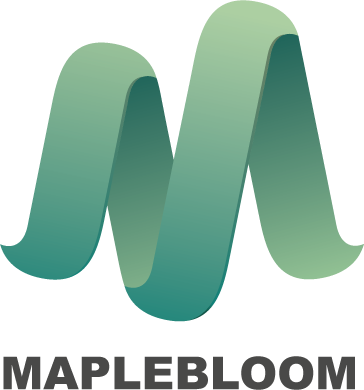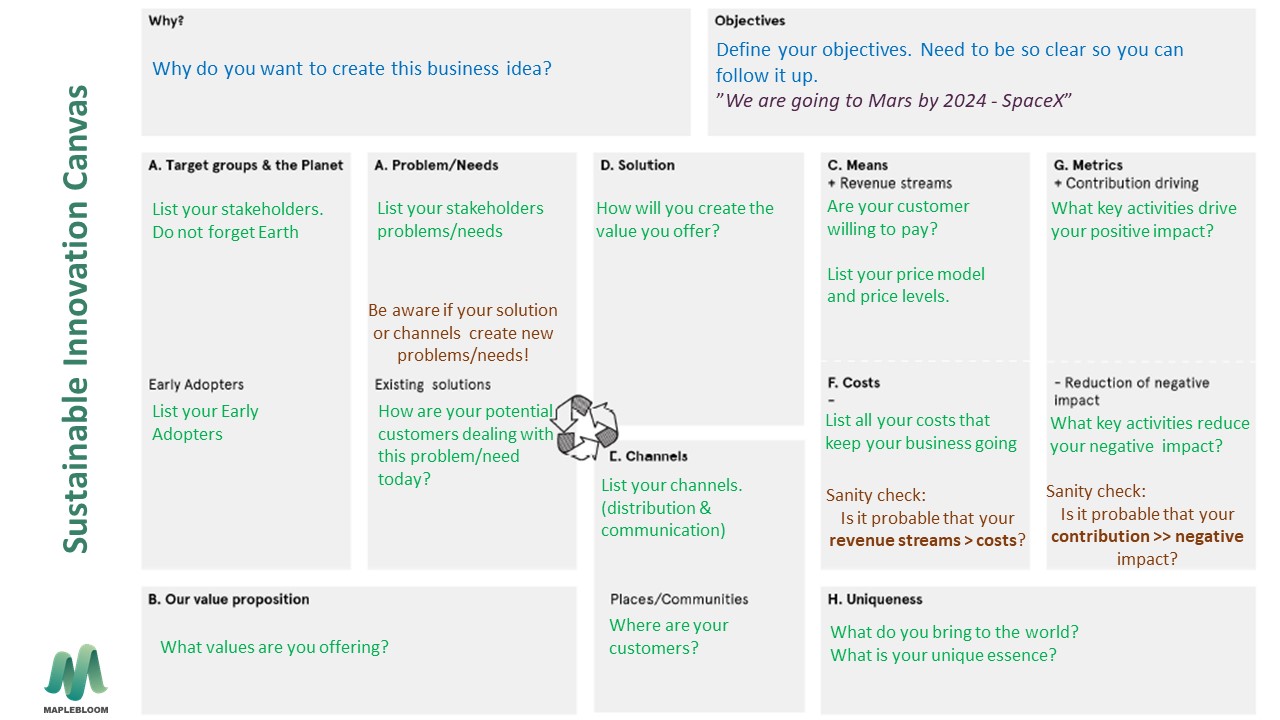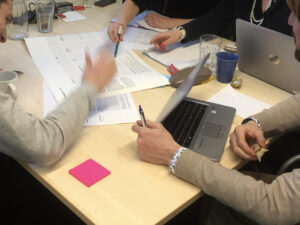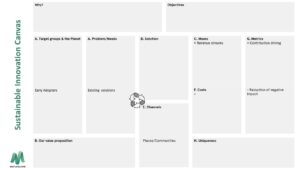Sustainable Innovation Canvas is a tool for creating a sustainable business model. Forerunners in this field, such as Alexander Osterwalder and Ash Maurya, pave the way for this canvas. It is an adaptation from Lean Canvas, that in turn, is adapted from Business Model Canvas. To see the differences, check out this post. Why Sustainable Innovation Canvas vs. Business Model Canvas and Lean Canvas?
The first thing that might have struck you is that no box in the Sustainable Innovation Canvas is called sustainability. Instead, in every box, sustainability is included. Those days, when considering sustainability as an add on are gone.
Nowadays, a successful business model needs to be sustainable. It needs to consider economic, social as well as environmental aspects. Without a sound economy, you will not have the strength to do your mission and fulfill your vision. This canvas could likewise be named Holistic or Conscious since it will help you to identify – a holistic, sustainable, conscious, and a successful business model.
When to use it
Whenever you want to quickly capture and get a good overview of your business model. For instance, if you have an idea and want to turn it to a business, or when you have a business and want to see how you can improve it. The most common way to use this tool is to identify a viable and sustainable business model.
How to use it?
Are you familiar with the Lean Canvas or Business Model Canvas? The approach is the same for this canvas, as for all canvas that are developed to support the development of new business models in a fast pacing world.
- Start to write down all that you know, including your guesses (= your hypotheses) about each part (box) of your business idea.
- Identify your riskiest assumption. If you have a new business idea, you will probably need to start with Box A. Do you genuinely understand your customers´ underlying needs?
- Start experiment to derisk your riskiest assumption and to validate your hypotheses.
- Keep on until all your hypotheses are validated and you have either found a sound business model, pivot or concluded that you better do something else.
We hope this canvas will do the magic for you – and the world!




